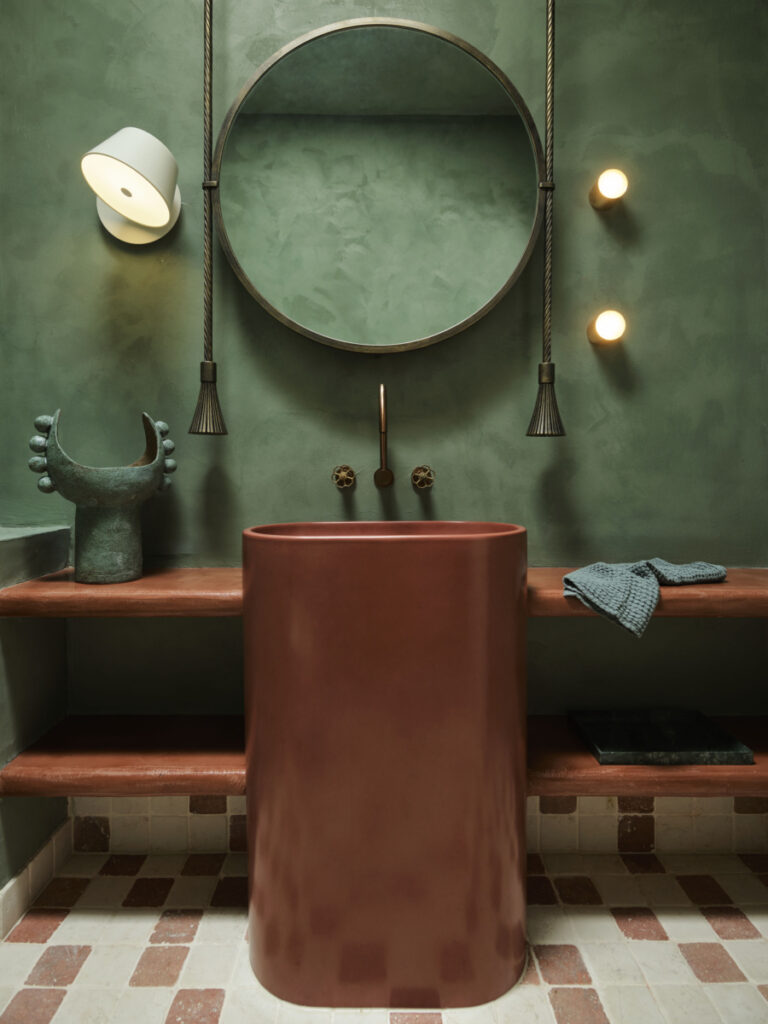
The earliest known mirror is estimated to be around 8000 years old, and can be traced to Anatolia, modern day Turkey. This example of one of the first mirrors humans have crafted, was made from obsidian, a volcanic glass that gave it an appearance very different from the one we are familiar with in modern-day mirrors. Nonetheless, since these practical apparatus was first invented, its role has steadily grown to the extent where it now has a pivotal influence in interior design across the world. Beyond their practical functions, mirrors are also valued as versatile design elements that can transform spaces by enhancing natural light, creating the illusion of space, and contributing to the overall aesthetic of a room. Whether integrated into traditional décor with ornate frames or embracing modern, avant-garde designs; these décor items serve as the timeless additions that reflect cultural and aesthetic preferences we consider indispensable in the global language of interior design.
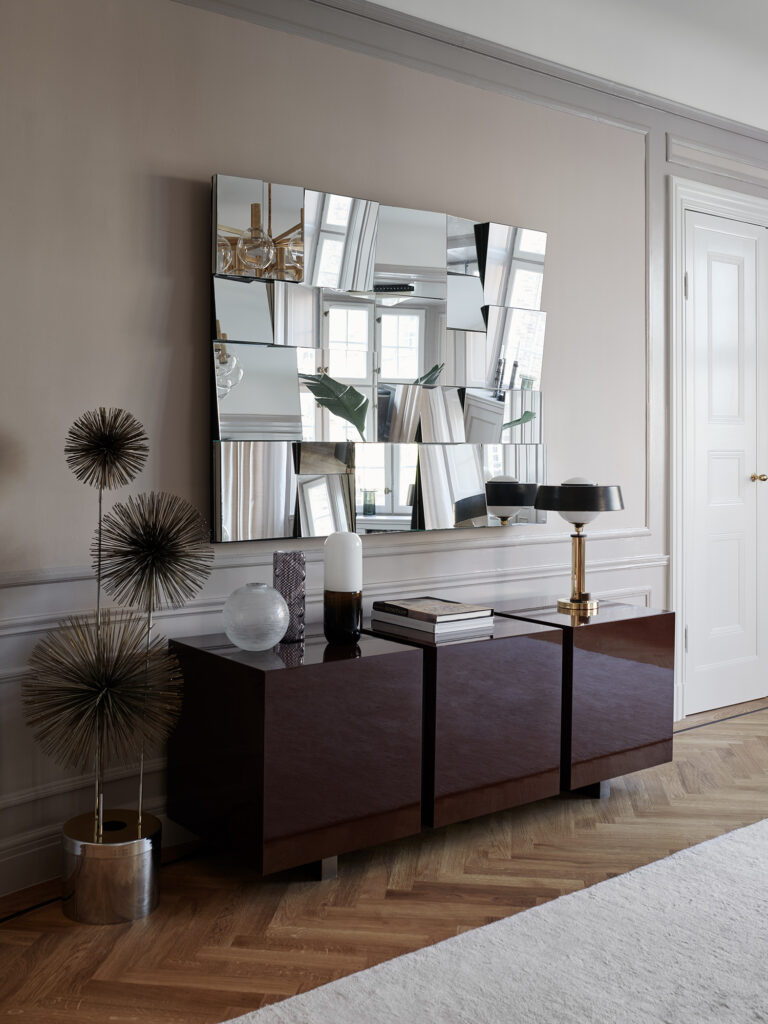
How can mirrors shape our perception of spaces
As mentioned earlier, mirrors are more than aesthetic enhancers for a room; their visual prowess has a profound impact on shaping our perception of spaces through various optical and psychological effects. Let’s first take a look at the illusion of depth and expansiveness that mirrors create by simply reflecting the surrounding environment. This ability to make a room seem larger than it is in reality through the manipulation of spatial dimensions is especially useful in smaller areas that tend to give off a cramped image. Additionally, mirrors also play an important role in enhancing natural light within a space, again, by reflecting and dispersing it across the room. This not only brightens the environment but also creates a more open and inviting atmosphere where visitors and owners can feel welcome every time they step inside. Moreover, their reflective quality can be given a third use by those wishing to direct the visual focus to particular architectural features, artwork, or scenery which can be glimpsed from more than one angle thanks to mirrors. Thus, these convenient items wield a transformative power in influencing our sense of size, brightness, and aesthetic balance within an environment.
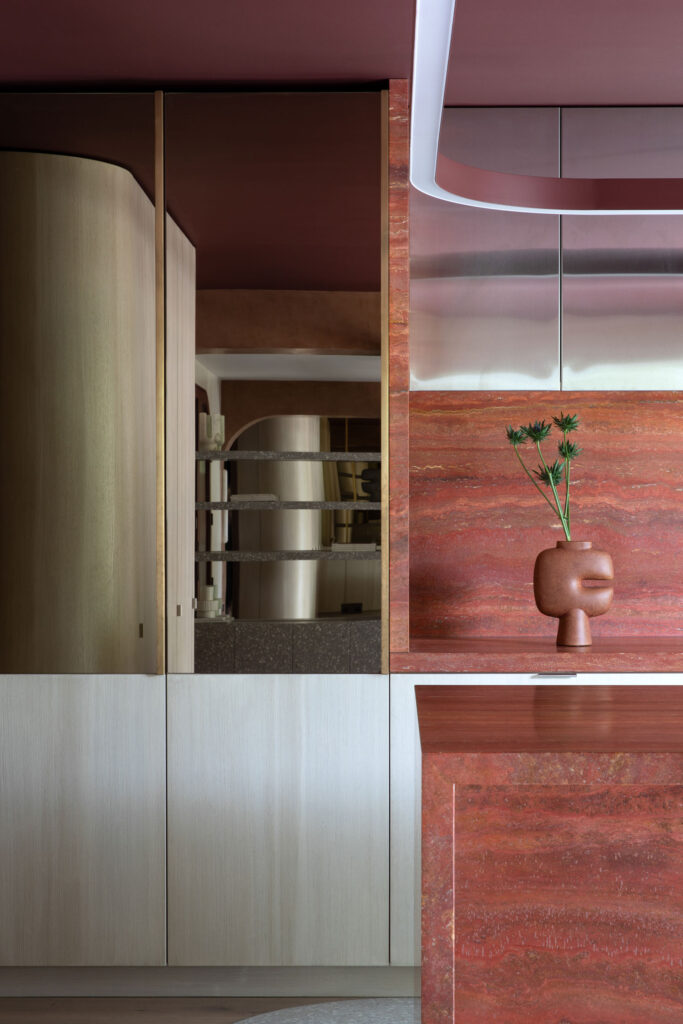
Examples of interiors
Take as an example a well-designed boutique clothing store that has found a way of utilizing mirrors to alter the perception of space with mirrored walls that visually expand the shopping area and create a sense of luxury through this spaciousness. A more familiar case can be seen in small urban apartments that employ floor-to-ceiling mirrors to give the illusion of larger square footage, reflect the natural light, and opening a space with both features. Similarly, restaurants with mirrored ceilings can create a heightened sense of vertical space which makes the dining area feel more airy and expansive. In all three instances, mirrors play their own significant role as integral design elements, shaping the perception of space to evoke a more comfortable and spacious environment.
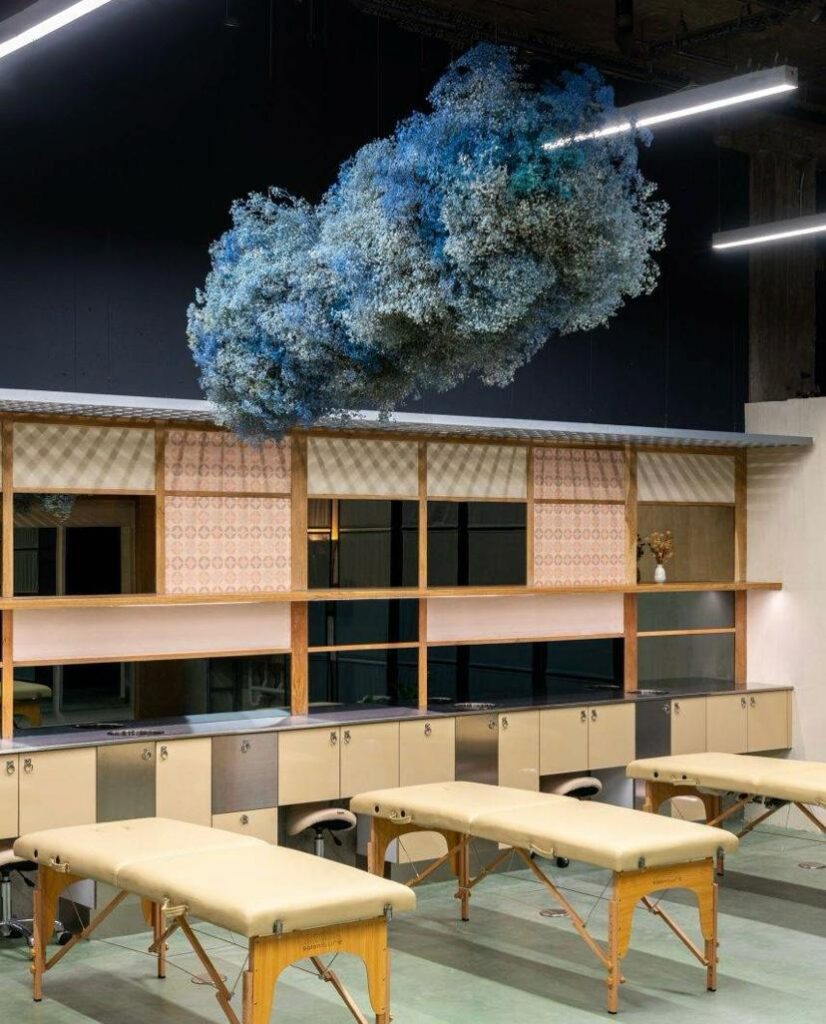
How can we place mirrors indoors to enhance our interior design
Let’s now take a look at the possibilities beyond the mere placement of decorative mirrors in our interiors. As, described above, their aesthetic and functional appeal are most effective when combined to create a truly impactful effect in our perception of space. The best way of doing so is to step outside the traditional norms of design to explore other ways of approaching mirrors such as the creative use of a mirror wall which creates a stunning focal point by covering an entire section of your room with mirrored tiles or an oversized mirror. This not only adds a sense of luxury but also makes a room appear significantly more expansive.

Blending with architecture
Your mirrors are more than decorative items falling under the jurisdiction of interior design. In fact, they are also historically used as intrinsic elements embedded into renown architectural pieces to transform every aspect of a space. We see this in the use of ceiling mirrors, particularly in rooms with low ceilings, to give off the illusion of height. In fact, not only flat surfaces but also structural forms such as columns or pillars cladded in mirrored panels that add visual interest and unexpected bursts of reflected light. The same applies to mirrored stair rises which are a rare but precious view as they reflect a glamorous and unusual detail that elevates staircase architecture to a completely new level. Moreover, such effects can be created in any part of the home or interior to create a powerful and intriguing statement. Just imagine a carefully constructed kitchen or bathroom backsplash using mirrored tyles that provide a stylish and reflective surface that stands out from the rest of it’s surroundings.
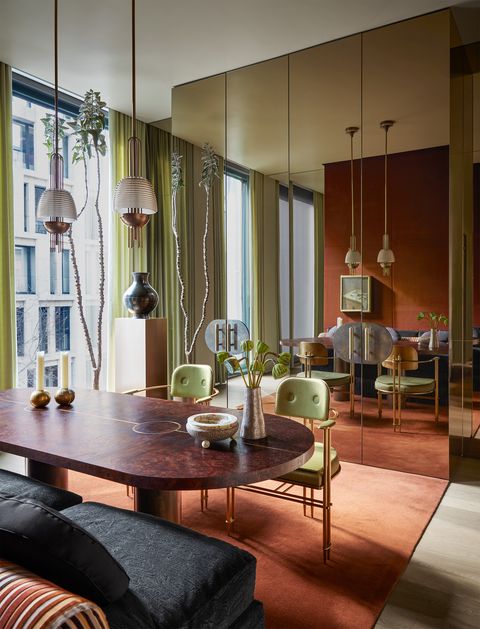
Practical items with a reflective touch
The mirrored effect is so fluid that it can even be integrated into smaller aspects of our interiors such as the furniture, doors, and in the trims of our décor. Starting off with furniture, mirrored pieces such as coffee tables, side tables, or dressers are perfect subjects for experimenting with reflective surfaces thanks to their ample space and flat surfaces that can become the optimal conductors of light and glamour. Meanwhile, for more subtle approaches one can add mirrors as trim or borders to furniture, room arches, or window frames. With solely this slight adjustment, one can amplify natural light and create a cohesive design element. And as we are touching upon the subject of harmony and cohesiveness, the other features that add to the overall impression of space and unified style, are doors. If we replace traditional doors with mirrored sliding or folding ones, we will come across a more creative reinterpretation of these practical household elements that creates a lasting impression of a modern interior.

An artistic approach to mirrors
Having discussed the practical, visual, and cohesive benefits of mirrors, we can move unto the more artistic angle by exploring how these decorative features can also create more dynamic indoor displays. For example, take small mirror tiles and combine them in a striking arrangement to create a mosaic on an accent wall. This results in the introduction of texture and movement as light passes through these uneven surfaces to hypnotize us with ever-changing patterns. Another possibility is to take mirrors themselves as artwork displays by selecting those with unique shapes or designs that catch your attention. If we treat mirrors as art pieces, we can even begin a small collection that can be grouped together and exhibited in an approachable installation of light and shadows.

A new view on mirrors
As we have seen today, beyond the fundamental reflective function of mirrors, these multifaceted elements hold a timeless value for interior design that has transcended trends and geographical borders. Mirrors possess the innate ability to influence our perception of space, amplify light, and create illusions of depth and texture; making them indispensable for both small apartments aiming for expansion or large spaces looking for added grandeur. Moreover, these decorative items contribute to the overall aesthetic landscape as their versatile nature provides us with a style for every interior, ranging from minimalist sleek designs, to classic frames and avant-garde pieces. Whichever style you chose and the purpose you decide to give them, mirrors are sure to retain their relevance for interior design among the ever-evolving landscape of trends and sensibilities thanks to their intrinsic allure and versatility.
